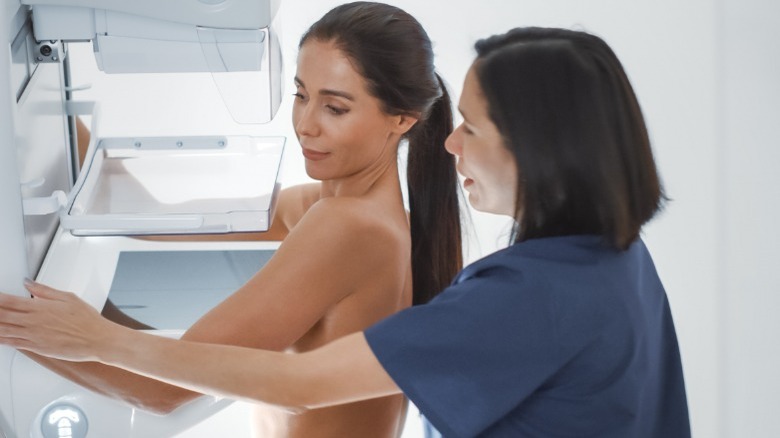3D Imaging May Be The Future Of Effective Mammograms
Besides skin cancer, breast cancer is the most prevalent cancer type among women, according to the American Cancer Society (ACS). Breast cancer represents roughly 30% of female cancers annually, with an estimated 43,700 women forecasted to die of the disease this year. Lung cancer is the number one cause of death among women, per ACS.
Even so, not all breast cancer diagnoses are a death sentence and fatalities have been on the wane since the late 1980s. Experts attribute these improved statistics to increased awareness and screening. Greater awareness and screening have inevitably led doctors to discover and treat breast cancer much earlier.
An important part of screening for breast cancer is an annual mammogram, which involves taking X-ray pictures of each breast in order to visualize any cancerous changes in the breasts. While 2D mammograms are the current standard of care in detecting breast cancer, they may be replaced by 3D mammograms in the future. Here's how they compare to each other and why experts say 3D mammograms are superior.
How effective is a 2D mammogram?
The origin story of the modern-day mammogram began in 1913 when German surgeon Albert Salomon discovered that X-rays of breast tissue could distinguish between different cancer types, according to the experts at Independent Imaging. It wasn't until Dr. Salomon's discovery, that the healthcare community realized that radiology could not only make these distinctions but also determine how a tumor spreads.
Fast forward a couple of decades to the 1930s when American radiologist Stafford L. Warren, considered a main pioneer in mammography, was the first physician to use this imaging technique to detect cancer ahead of surgery. Before Dr. Warren, doctors used invasive surgeries to determine if cancers were present. However, it was ultimately Dr. Robert Egan who elevated the importance of mammograms. It was due to his research and development of modern mammography and his promotion of mammography as a vital tool that could save lives that earned Dr. Egan the moniker "father of mammography." Eventually, by around the end of the 20th century, digital images were introduced, which empowered physicians to manipulate the images for improved viewing of dense breast tissue, per Independent Imaging.
During a conventional digital mammogram — also knowns as a 2D mammogram — a technician will typically take two pictures of each breast, one from the side and one from above. A computer then takes the X-rays and creates two-dimensional images. A 2D mammogram can detect changes in the beast as well as potential red flags such as abnormal lumps, cysts, and calcifications, according to the National Cancer Institute.
Why are 3D mammograms better?
3D mammography was first approved by the Food and Drug Administration in 2011 and has since become more widely available, according to the experts at Cedars Sinai.
As more doctors have begun adopting 3D mammograms for screenings, there is increasing evidence that points to the superiority of the technology at detecting breast cancer compared to 2D mammograms. This higher quality was again supported in a recent study published in the medical journal Radiology, which concluded that 3D mammography, also known as "digital breast tomosynthesis" (DBT), had better screening outcomes compared to 2D, or conventional digital mammography. The study, which took place between 2014 and 2020, revealed that DBT detected cancer at a rate of 5.3 per 1,000 women compared to 2D mammograms, which have a 4.5 per 1,000 cancer detection rate.
Dr. Emily Conant, a professor of radiology and the division chief of Breast Imaging at the Hospital of the University of Pennsylvania and a co-author of the study, told Healthline that what makes this study different than previous studies is its size and scope. The study encompassed five major health systems across the country and included over 1 million women between the ages of 40 and 79. In addition to the DBT having a better cancer detection rate, its accuracy results in fewer false positives and fewer recalls compared to 2D mammography. Due to the superior performance of DBT, more experts now advocate for DBT to be the standard of care, per Healthline.



